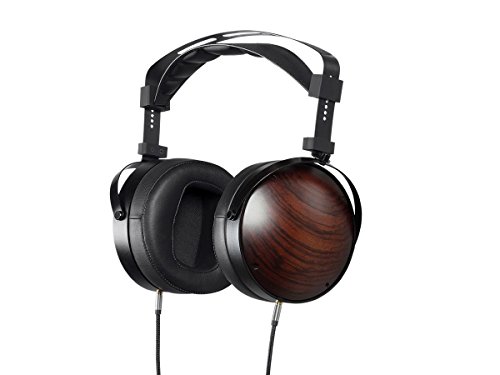How Do Planar Magnetic Headphones Work?
As compared to dynamic drivers, planar magnetic headphones have lower distortion. This is because it vibrates the entire diaphragm, not just the part attached the voice coil.
They also have a larger soundstage and better separation of instruments and ability to differentiate. They do leak more and require isolation to prevent the sound from affecting those nearby.
The diaphragm
The diaphragm plays an essential function in nearly all transducers of sound (headphones and loudspeakers and microphones) that move air to create sound. In headphones it's a flat part of diaphragm, suspended between two magnets that produce an electromagnetic field when stimulated by audio signals. In a planar headphone, the current of electricity from a headphone's source is transmitted to the diaphragm through a coil. This coil generates a magnetic field that causes the diaphragm to vibrate.
The diaphragm suspension is made of neodymium, titanium or other synthetic materials. This allows the diaphragm to resonate with your ear at various frequency. Unlike dynamic drivers that are used in planar headphones, planar magnetic headphones can deliver very high SPLs without sounding distorted or muddy.
In addition to the ability to reproduce high SPLs, planar magnetic headphones also provide a better soundstage. This is due to the flat diaphragm produces the planar wavefront rather than the spherical-focused wavefront that is found in many dynamic drivers. The headphones create an acoustic environment that is more natural and are easier to localize.
Transient response is another benefit of using planar magnet headphones. This is due to the ability of planar magnetic headphones to reproduce short-lived peaks, such as cymbal hits and kick drum strikes. The huge size of the diaphragm as well as the fact that it moves evenly across its surface ensures that there is no distortion at these peak frequencies.
However, planar magnetic headphones do have some disadvantages which should be considered when deciding on a set. They tend to be more expensive than their dynamic counterparts. This is mostly due to the design of their engines that can be complex, as well as the history of the company behind them.
There are many low-cost planar magnet headphones that are available for less than $100. In addition to their outstanding quality, these headphones are available in open-back and closed-back designs and you can pick which one fits your listening habits best. Audeze LCD-2 Classics and HIFIMAN Arya Stealth Magnets Edition are two of the best headphones available.
The voice coil
Planar magnetic headphones offer exceptional clarity and clarity across all frequencies. This is due to the thin, flat diaphragm sandwiched between magnet arrays. When an electrical signal is transmitted from your audio source, the material that conducts it's windings inside the voice coil interact with the magnetic field, causing the diaphragm to move creating sound waves.
The planar-type driver has the advantage that each vibration occurs at the same rate and is consistent regardless of the position of the diaphragm within the magnetic field. This results in an even and consistent sound with less distortion. It's also more comfortable to listen to. In contrast dynamic drivers tend to create more of a spherical soundwavefront that's less consistent and can be distracting.
Due to the way in which they function they require a stronger amplification system than their dynamic counterparts. They are also more heavy and bulkier due to their larger, more flexible membrane. This means that they usually require an external amplifier and DAC to supply enough power to enable them.
Additionally that, planar magnetic drivers are much more expensive than their dynamic counterparts due to the fact that they're usually made of high-end materials. In recent times, however, some HiFi audio headphone manufacturers have revived this old technology. We're now seeing a variety of new headphones featuring planar magnet drivers, which provide the best listening experience.
The choice between planar and dynamic headphones is a matter of personal preference and budget. Planar magnetic headphones are known for their clarity and accuracy and have a larger soundstage than dynamic models. However, they're often more expensive and many listeners prefer the booming bass and warm sound of dynamic headphones.
Dynamic driver headphones tend to have more power and slam, however this difference is not often noticed by listeners. They're also better at imaging the structure and differentiation. There are exceptions to the rule. Some excellent planar-magnetic headsets can be bought at affordable cost.
The magnets
In a typical headphone with a dynamic driver the electrical impulses generated by your audio source travel through a conductive material that interacts with the magnetic fields in the driver. These are used to bend the diaphragm flat and create sound waves. Planar magnetic headphones however make use of a thin layer of conductive material sandwiched between two powerful magnets. They are more difficult to produce, which is why they're more expensive.
A heavier and bigger design is also a result of the necessity for more space around drivers. They also require more power to reach their full potential than their dynamic counterparts. This isn't a major issue all the time, but it's worth considering when selecting these headphones.
While it's not true for all headphones, a lot of the top magnetic headphones that are planar will have a more open and airy sound than their more dynamic counterparts. This creates an airy feel that is quite appealing to some listeners. The soundstage they offer is also a bit larger which can be beneficial when listening to music in a group.
simply click the up coming internet site -back design is a common choice for many designer headphone brands, including the likes of HiFiMAN and Audeze. Although they're not as popular as closed-back models, they can be an excellent opportunity to experience the advantages of planar magnetic technology. For example, the HiFiMAN Sundara offers a great introduction to the speed, precision, and detail of these headphones at an affordable price.
The housing
If you're an avid audiophile or just someone who enjoys music, odds are you've heard of planar magnetic headphones. These headphones have a unique design, with flat diaphragms that are embedded into the headphone. They are available in over-ear and open-back designs. These headphones are not only unique in appearance, but also operate with a different method than dynamic drivers.
Contrary to the traditional driver that relies on the voice coil to create sound waves the planar magnetic headphones utilize an array of magnets that move the diaphragm back and forth to create sound. These arrays can be positioned on either one or both sides based on the design. The magnets are activated when an electrical signal passes through the voice coil, causing it to vibrate. The vibrations generate magnetic fields that interact with the magnets at either end of the diaphragm. The interactions cause the diaphragm to pull and push against the magnetic fields. The audio signal is represented in sound waves.

Planar magnetic headphones can create a deeper sound and have a better bass extension. The large, flat diaphragm responds much faster to changes in the input signal, so they are able to respond quicker to bass response and are less susceptible to distortion. This creates a cleaner and more controlled sound that some audiophiles appreciate.
However, while these headphones may be able to reproduce higher frequencies, they lack the punch or slam of modern high-end dynamic driver headphones. They can be difficult to hear for those who want to listen to hard or metal rock music.
Because of their unique design, planar magnetic headphones are more expensive than other headphone types. They also require a separate amplifier and digital audio converter to provide power to the drivers. Some consumers may find that the price of these headphones is more expensive, but they believe that it's worth it. There are other kinds of headphones available for those who do not wish to spend too much.
